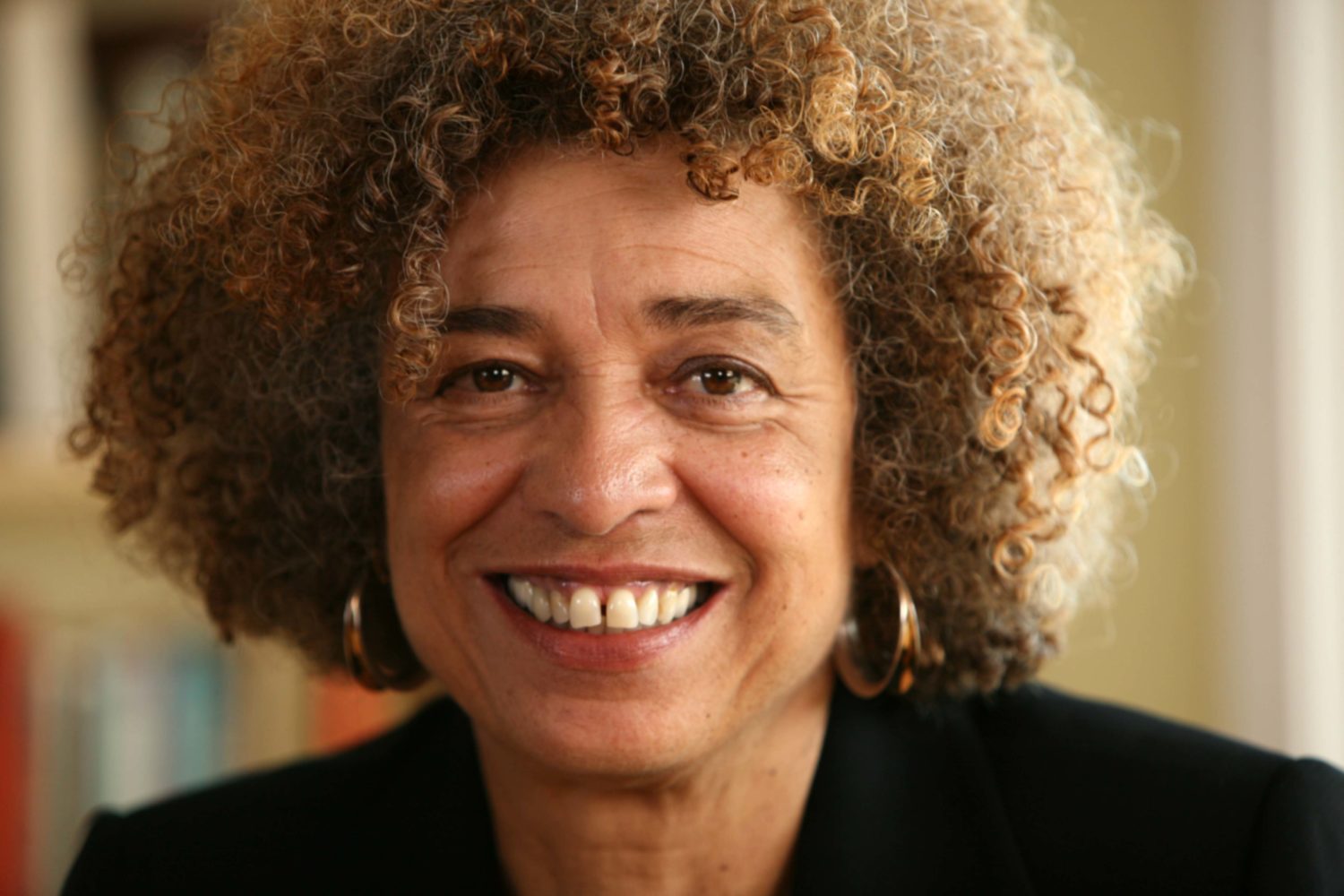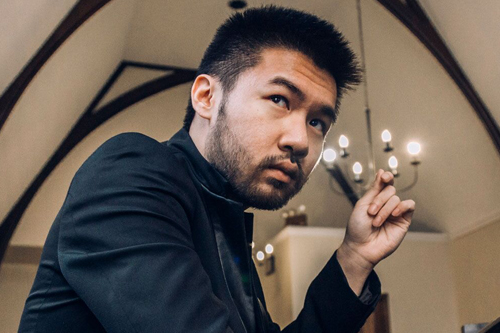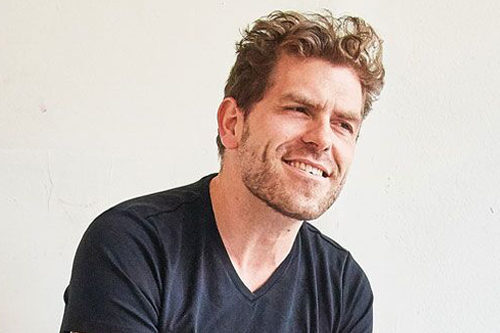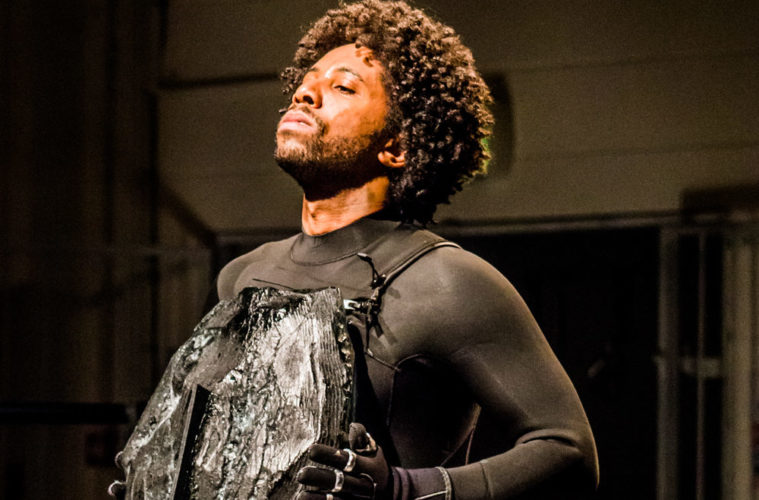Hope for meaningful progressive change in this country seems more distant than ever, but L.A. Philharmonic’s Power to the People! festival is a timely reminder that historic social transformations rarely come from treacherous politicians and are indeed instigated by the force of the people themselves.
Despite good intentions, such consciousness-raising events often feature predictably mainstream soft-rock musicians and earnestly dull folk singers, but co-curators Herbie Hancock and Gustavo Dudamel have assembled an impressively diverse lineup of bold and risk-taking artists who will appear at Disney Hall, California African American Museum and A Noise Within over the course of this month. [Note: Due to concerns surrounding the coronavirus pandemic, L.A. Phil announced on Thursday, March 12, that the festival’s remaining events have been canceled.]
“It’s no secret that we’re going through a very politicized time right now,” Meghan Martineau, L.A. Philharmonic’s vice president of artistic planning, says in a phone interview. “What role does music play in these times? This is an artist-led festival that celebrates the role of the artist in making change. The range of offerings I find really exciting … Herbie and Gustavo are both very positive thinkers. [Their goal is] to make a festival that cuts across time and borders.”
The festival officially started at Disney Hall on Thursday, March 5, with Hancock and his group collaborating with conductor Dudamel and L.A. Phil on a jazzy-experimental program that was scheduled to include Courtney Bryan’s White Gleam of Our Bright Star and Wayne Shorter’s Aurora (featuring words by Maya Angelou) alongside two pieces by Hancock, Ostinato: Suite for Angela (a 1971 homage to activist Angela Davis, who was in prison at the time) and I Have a Dream (a 1969 tribute to the recently assassinated Dr. Martin Luther King Jr.).
Power to the People! continues tonight, Friday, March 6, with Patti Smith & Her Band performing at Disney Hall. While Smith has not always been the most overtly political songwriter, she and her late husband, Fred “Sonic” Smith, composed the stirring 1988 anthem “People Have the Power,” in which she declared, “We can turn the world around/We can turn the Earth’s revolution/We have the power.” Smith’s appearance represents a rare acknowledgment of the punk generation by L.A. Phil.
The festival’s highlights also include Puerto Rican rapper Residente mixing words with Dudamel and L.A. Philharmonic (Saturday, March 7), Yolanda Adams pumping up gospel with Dudamel and the orchestra (Sunday, March 8), and classical-piano phenom Conrad Tao revitalizing populist works by Frederic Rzewski in a solo recital (Tuesday, March 10). At California African American Museum, New York Times critic Wesley Morris talks about the nexus of African-American fashion, music and identity in a lecture titled “Does This Cardigan Make Me Look Gay?” (Tuesday, March 10).
Legendary MC Rakim breaks down the art of rap in a panel discussion with moderator Tyree Boyd-Pates titled “Sweat the Technique: The Politics and Poetics of Hip-Hop” at CAAM (Wednesday, March 11). Jazz trumpeter Terence Blanchard discusses his career in a free chat with Hamza Walker at CAAM (Thursday, March 12). Two nights later, Blanchard’s E-Collective and guests Anthony Hamilton, Valerie June and Ben Harper re-create music from Blanchard’s soundtracks to various Spike Lee films (Saturday, March 14). Meanwhile, A Noise Within hosts a staged reading of selections from Chicano playwright Luis Valdez’s Actos, a series of one-act plays originally written for farm workers (Friday, March 13).

Angela Davis (photo by Christine Alicino, courtesy of L.A. Phil)
Back at Disney Hall, jazz singer Cécile McLorin Salvant performs an ambitious song cycle, Ogresse, which is a kind of modern musical fairy tale about a flesh-eating monster, with a libretto by the singer (Sunday, March 15). Then, in one of the festival’s main events, Dr. Angela Davis offers a lecture, “Power to the Imagination: The Role of Art and Creativity in Social Change,” also at Disney Hall (Wednesday, March 18).
“It’s a meditation on art,” Martineau says about Davis’ lecture, “with her perspective on the role that art plays in social-justice movements and the potential of music to spur change today.”
Cellist Seth Parker Woods plays a cello made out of ice (!) that has been implanted with electronics by composer Spencer Topel in what should be a visually and musically astonishing version of the performance piece Iced Bodies, in a free appearance at Disney Hall (Saturday, March 21). The two artists are “creating an iced cello dyed black and embedded with electronics. They perform while the cello melts,” Martineau explains. “We have to bring in a large freezer so they can prepare the art before the performance.”
The major part of the festival culminates at Disney Hall with the West Coast premiere of composer Ted Hearne’s Place, a staged oratorio about gentrification with a libretto by rapper-actor Saul Williams (Tuesday, March 24). Both Hearne’s Place and Tao’s piano-recital program involve works that embody the festival’s overall theme of people struggling to preserve their lives, identities and freedom in the face of increasingly repressive and conservative political forces.

Conrad Tao (courtesy of L.A. Phil)
“It’s a pretty heavy program,” Tao, 25, reveals by phone from his home base in New York. On Tuesday, March 10, at Disney Hall, the native of Urbana, Illinois, is scheduled to perform Aaron Copland’s Piano Sonata and Frederic Rzewski’s Which Side Are You On?, two of the key tracks on the pianist’s fittingly titled new album, American Rage (Warner Classics). Tao’s 15-minute-plus version of Which Side Are You On? reworks Rzewski’s piece, which is in turn very freely adapted from Florence Reece’s protest song written in 1931 to inspire striking coal miners in Kentucky.
“Reality is a spontaneous, unknowable thing,” Tao says. “This is where improvisation is always an ingredient, especially in Rzewski’s language. Which Side Are You On? ends with an optional improvisation, which Rzewski provided instructions for [the composer suggested that any improvisation should be as long as the original piece]. My version is long, and I embrace that challenge happily.”
A recording of Reece’s short, stark a cappella version will also be heard at the Disney Hall recital for the sake of comparison. “I think it helps situate the piece as an explosion of the tune,” Tao says. “I’m attracted to contrasts … The hope is that violent juxtaposition will get people to listen more.”
The second half of Tao’s program will be another work by Rzewski, The People United Will Never Be Defeated!, an even more elaborate musical extrapolation, in this case 36 piano variations based on Chilean composer-pianist Sergio Ortega’s song “¡El pueblo unido jamás será vencido!” “The People United is a solid hour,” Tao says about Rzewski’s alternately playfully tumultuous and fervently manic variations.
Tao made a dramatic appearance at the Theatre at Ace Hotel in downtown Los Angeles in February last year, when he pried open the curiously poignant, halting, back-and-forth piano melody that winds down behind baritone Rod Gilfry’s imposing one-man performance as a bitterly sarcastic ex-pianist, in David Lang’s opera The Loser. (A studio recording of the opera with Gilfry, Tao and the Bang on a Can Opera Ensemble was just released on Cantaloupe Music.) Tao gained more local attention in May 2019 when he performed Beethoven’s Piano Concerto No. 1 with L.A. Philharmonic at Disney Hall.
But even when this notoriously adventurous new-music pianist plays a traditional program, he isn’t necessarily interested in dutiful, exact replication. “I play a lot of oldies, I play a lot music by dead people … I still play concertos by dead German dudes,” Tao says. “My biggest soapboxes are that I encounter this attitude that music’s greatness lies in this notion of the score representing this perfect Platonic ideal … The score is like the gates of a downhill skiing track, these pillars that you define so someone can shoot through it. That’s my sense of what a score is.”
The themes on American Rage, which Tao began working on in 2015, before the election of Donald Trump as president, coincided with the intent behind the Power to the People! festival. “It seemed to fit perfectly,” Tao says. “The People United was specifically requested for this. It fit in well with the stuff I was already exploring, U.S. labor history and broad left music … things I was already thinking about vis à vis inequality and white supremacy … It’s a big picture. It’s been in the experience of my life for the better part of a decade, these two strands, composition and left politics,” says Tao, who first heard The People United when he was 12.
Composer Ted Hearne is another artist who sees his life, politics and work as intertwined. “I’ve always equated what I want to do with music as having a communicative power to create a better world,” he says in a phone interview. The Silver Lake composer has taken on politically charged themes in his 2008 oratorio Katrina Ballads, which used the actual words of politicians and media to paint an aural picture of the frenzy surrounding Hurricane Katrina, and 2014’s The Source, a multimedia work (with a libretto adapted from words by Chelsea Manning and military personnel in Iraq and Afghanistan) that led to a jolting, harrowing finale. Hearne turned the arguments from a Supreme Court case about corporate personhood into the 2014 cantata Sound From the Bench, which was a finalist for the 2018 Pulitzer Prize.

Ted Hearne (courtesy of L.A. Phil)
Hearne, 37, conducts L.A. Phil New Music Group in the West Coast premiere of Place, a work he created with Saul Williams and director Patricia McGregor, at Disney Hall on Tuesday, March 24. Written for six singers and 18 instrumentalists, the piece was commissioned by L.A. Philharmonic, Beth Morrison Projects and the Barbican Centre and received its world premiere at BAM Next Wave Festival in Brooklyn in October 2018.
“Saul is one of the greatest living poets in America,” Hearne says about Williams, the poet-rapper-actor who has released such thought-provoking, genre-busting albums as The Inevitable Rise and Liberation of NiggyTardust! and MartyrLoserKing and starred in the films Holler If Ya Hear Me and Slam. Williams and Hearne had previously collaborated with Mivos Quartet. “He wrote the majority of the libretto … I wrote the beginning for him to respond to. I would write text, a response to the idea of gentrification, like an opening volley to Saul, who would respond to it … It started as a conversation about what it was like to live in Fort Greene, what it felt like to be in this neighborhood with the widest disparity of wealth [in New York City] … The idea behind the piece is blowing up the ephemeral, surface level of the typical nature of some conversations around gentrification. It’s a much more complex conversation that’s been going on for ages.”
The work blends jazz, hip-hop and new-music sounds with vocal arrangements that are closer to Broadway and psychedelic pop than to traditional opera. “I wrote it for mostly low-register instruments — two bass clarinets, three violas, cellos, trombone — and a band,” Hearne says. The small electric ensemble that augments L.A. Phil New Music Group includes members of Erykah Badu’s band. “I conduct the piece, and I also play a sampler and manipulate vocal processing through a keyboard.”
Place encompasses both spoken-word passages (“Is it okay to say white supremacy in white spaces? … Am I okay?”) and melodically bittersweet lyrics (“My anger is beautiful, but my beauty is all the rage”). One section even riffs on the line “They don’t love you like I do,” from the heart-catching Yeah Yeah Yeahs song “Maps.”
“I love that song,” Hearne says. “I love actual maps. I thought that was a nice line to use in the chorus. [My song] is a personal blueprint, a mapping. The things I reference all have a personal meaning to me.”
Even though Place was initially inspired by Brooklyn, how much was the work influenced by Hearne’s life in Los Angeles? “It has everything to do with the place. These issues are present in all American cities … They’re the very surface of a much deeper conversation about redlining and racism in America … We saw many of the same problems, the same inequities [in L.A. and New York] … Homelessness is a deepening crisis. Disney Hall is just blocks away from Skid Row.”
Advertising disclosure: We may receive compensation for some of the links in our stories. Thank you for supporting LA Weekly and our advertisers.

